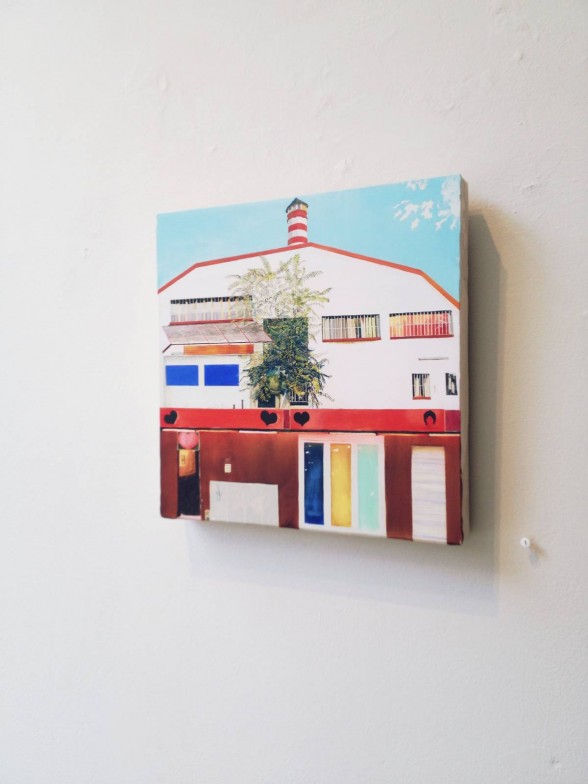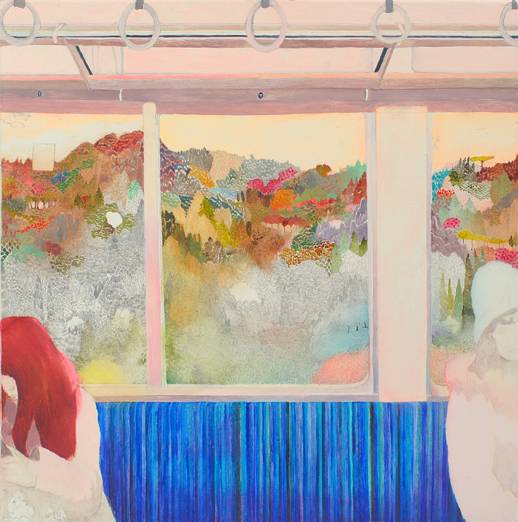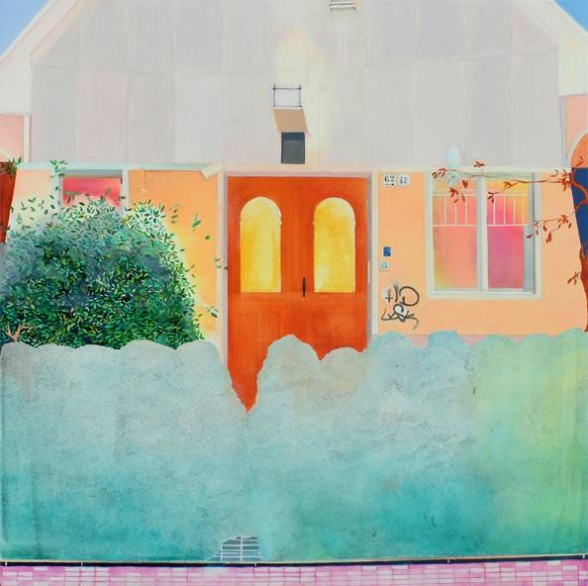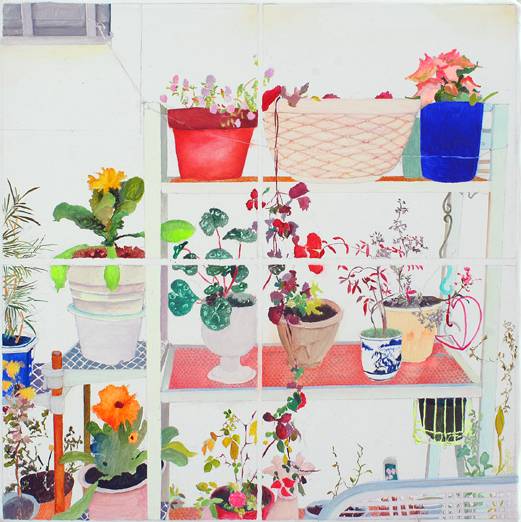[Irena gets up close and personal with a very detailed show of dreamy oil-on-panel works. — the Artblog editors]
When painting in the small-scale, it often takes an ounce of something extra to capture an art audience’s attention, even at the local level. Moore College graduate Anne Canfield manages to do just that in her solo exhibit at Seraphin Gallery.
Canfield’s knack for creating imaginative, yet genuine pieces is a special find in the growing flurry of Philadelphia’s contemporary art scene, and places the painter on the who-to-watch list of promising Philadelphia artists.
Exploring memory and awareness

From deconstructed architectural motifs to dreamscapes blurred with reality, Canfield paints landscapes, still lifes, and interiors in a heavily psychological and near-Surrealist manner. The exhibit, entitled Fugue State, deals with perceptions of reality mixed with perceptions of self.

“Fugue” is defined as a reversible loss of memory and awareness of one’s own identity, often as a result of changing environments or situations. The theme of the fugue state is carefully entwined within each of Canfield’s pieces. Canfield, a Philadelphia resident, paints scenes from travel and observations of places of residence in ways that obscure the line between what is real and what is personally perceived. In the colorful and wistful “Train Ride to the Sacred Mountain,” Canfield’s mountains, seen from a train window, are technicolored and barely of this world.
Cinematic influence and subjective interpretations
Canfield’s work is reminiscent of that of PAFA graduate and Philadelphia artist Sara McEneaney, in that both women render distorted perceptions of possible realities and vague references to subconsciousness in interior and exterior scenes.
While McEneaney often offers the viewer self-portraits within her pieces, however, Canfield rarely depicts herself in any of her works. This is most likely because Canfield’s paintings are viewpoints from her own perspective and memory, rather than direct scenes viewers are looking into.
Canfield takes inspiration from early Netherlandish painters and Indian miniatures: references that can be observed in the whimsical detailing of her works. She is also highly interested in film, especially Italian cinema, which offers subjective interpretations of truth. Canfield cites Fellini as a muse in her artist statement, and like the legendary director, she manages to blend reality and surrealism into one experience.

It is often unclear whether Canfield’s scenes are true to life or figments of her imagination, although it can be safely assumed they are overlaps of both. In certain pieces, such as “Good is What Pleases,” two different scenes are molded together to create a single “other-space”.
The questionable authenticity of Canfield’s interpretations is what makes the entire show a literal “Fugue State”. As gallery owner Lorraine Seraphin put it during our interview at the gallery: “Anne’s works are based on real-life experiences and scenes, but she has manipulated them, made them inventive, and in many cases, surrealistic.”

Canfield’s unusual pieces incorporate bright, saturated, non-representational colors and very thin, careful lining. Canfield happens to be very nearsighted and takes off her glasses while she paints. Perhaps this explains the level of refinery in the tiny, carefully planned detailing. Such painstaking work can be observed in the highly surreal “The Blue Bird,” and in “Euphoria No. 1 and 2,” a set of paintings portraying a potted-plant arrangement.
Anne Canfield’s colorful narratives successfully demand the attention of the viewer, despite their very small scale; it is nearly impossible to walk through her exhibit and not want to carefully study each meticulously crafted painting. Her pieces are windows into complicated psychological states and anxieties, but at the same time offer peaceful nostalgia and whimsicality.
Fugue State is on view at Seraphin Gallery,1108 Pine St., Philadelphia, PA, through Jan. 11, 2015.









